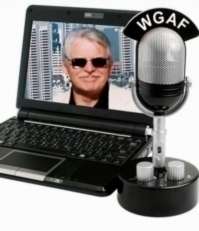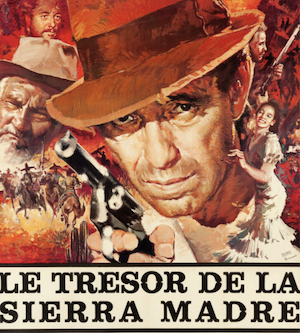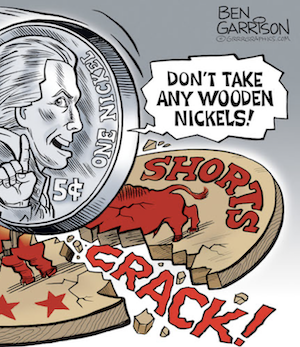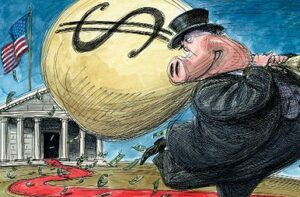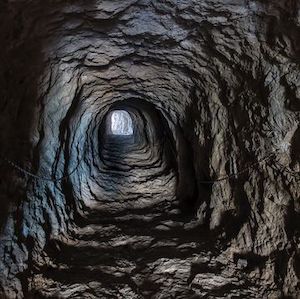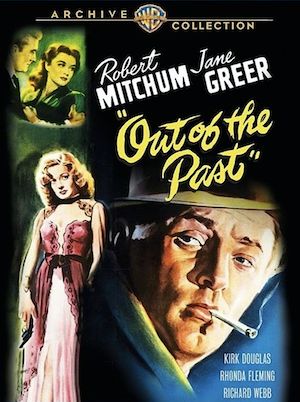“I keep six honest serving-men (They taught me all I knew); Their names are What and Why and When And How and Where and Who.” ~ Rudyard Kipling

I. Who invests in gold?
Institutions and hedge funds invest in gold… Funds and institutions, so-called professional investors, have poured enormous amounts of capital into gold over the last few years through ETFs, paper ownership in futures and options, and outright physical ownership in the form of bullion. Due to the constraints and logistical problems associated with outright ownership of large physical positions, the most significant funds and institutions with the most extensive commitments do most of their investing through gold ETFs. The chart on gold ETFs’ growth (shown below through 2020) offers ample evidence of growing institutional interest in gold ownership, including the record-breaking stockpiles’ surge in 2020. “Investment demand,” says ETF Trends, “remains robust as an increasing number of institutional investors, sovereign wealth funds, and central banks seek gold as a potential source of return and diversification to traditional stock and bond portfolios.”
Central banks invest in gold… The World Gold Council reports that “The past decade has seen a fundamental shift in central banks’ behavior with respect to gold, prompted by a reappraisal of its role and relevance after the 2008 financial crisis. Emerging market central banks have increased their official gold purchasing, while European banks have ceased selling, and the sector now represents a significant source of annual demand for gold.” Central Banks sold 7,853 tonnes of gold from 1987 to 2009. From 2011 through the third quarter of 2020, they bought over 5000 metric tonnes. Most of the media coverage on central bank involvement in the gold market concentrates on purchases. Still, the bigger story may very well be their withdrawal from the market as sellers. The nearly full stoppage in sales since 2009 is the result of public pressure from citizen groups and a realization among central bankers, since the 2008 crisis, that gold, now more than ever, is an important asset of last resort for national reserves.
Robert Rekasi, who heads up foreign exchange reserves management for the Central Bank of Hungary, explains in a Central Banking magazine interview why central banks take an interest in gold:
“It was a long-term national and economic policy strategy decision to increase the size of our gold holdings. The decision was driven by stability objectives; there were no investment considerations behind holding gold reserves. In normal circumstances, gold has a confidence-building feature, so it may play a stabilizing role and act as a major line of defense under extreme market conditions, in times of structural changes in the international financial system, or during deep geopolitical crises. The central bank also decided to repatriate overseas gold holdings. Holding precious metals within the country is consistent with international trends, enhances financial stability, and may strengthen market confidence in the Hungarian economy.”
Billionaires invest in gold… Billionaires have been particularly vocal about their attachment to gold in recent years. That group at this writing includes Leon Copperman, Ray Dalio, Sam Zell, Jimmy Rogers, Thomas Kaplan, Mohammed El-Erian, John Paulson, Jeff Gundlach, David Einhorn, Frank Giustra, Naguib Sawiris, Jacob Rothschild, and Paul Tudor Jones – to name a few. Each has expressed concern about future economic uncertainty, central bank money printing policies, and the jeopardized role of the dollar as the world’s primary reserve currency. Each, in turn, has publicly advocated gold ownership as a means to hedging those concerns. One major hedge fund advocate of gold ownership, Ray Dalio (who also heads up the world’s largest hedge fund, Bridgewater Associates) spoke for a good many of his colleagues when he said succinctly: “There’s no sensible reason not to own gold…If you don’t own 10% – if you don’t have that – then there’s no sensible reason other than you don’t know history and you don’t know the economics of it.”
Last year, Bridgewater issued a full-report expanding on the firm’s thinking headlined Some Perspective on Gold in the New Paradigm. “We’ve had a few such periods of extraordinary stimulus over the past century,” it reads, “all in times of economic depression, conflict, or both – and in all of them, gold saw triple-digit rallies that dwarf its recent run-up…In the era of fiat money, even without the explicit need to devalue against gold, the effect of reflationary policies is to devalue paper currencies relative to store holds of wealth.”
Gold rose sharply in the top six global currencies in 2020 – Indian rupee (+27.8%); Chinese yuan (+17.3%); British pound (+21.2%); European euro (+14.4%), and Japanese yen (+18.6%). In short, it does not make sense to flee the dollar in favor of some other currency when they are all, for the most part, depreciating against gold. The price of gold in dollars, by the way, rose 23.8% in 2020.
Private individuals invest in gold… There is a misconception, often perpetuated by the mainstream media, that individuals who own gold are somehow outside the mainstream. Nothing could be further from the truth. The people we have helped become gold owners are among those we rely upon most in our daily lives – our physicians and dentists, nurses and teachers, plumbers, carpenters, building contractors, business owners, attorneys, engineers, and university professors (to name a few.) In other words, gold ownership is pretty much a Main Street endeavor.
In a recent Bankrate survey, one in seven investors (14%) chose gold as the best place to park money they wouldn’t need for more than ten years – making it the fourth most popular choice. To put that number into perspective, 28% chose stocks (an asset garnering considerable attention of late). In comparison, 26% chose real estate (the old mainstay), and 4% chose bonds (often touted as gold’s chief competitor for safe-haven purposes). Another 18% said they would simply bank the money. Similarly, a 2020 Gallup poll found that 17% of American investors rated gold the best investment “regardless of gender, age, income or party ID. . .” The World Gold Council, we might add, recently reported global retail investment demand running at a record pace as investors adjusted their portfolios to weather the economic and financial ill-effects of the pandemic.
II. What is gold’s role in the investment portfolio?
The following is an excerpt from my book – The ABCs of Gold Investing: How to Protect and Build Your Wealth with Gold. It is a timeless story about gold’s ultimate value. Though investors use gold for varying purposes in the investment portfolio, they are all secondary to its role as the final means of payment and an enduring store of value under even the most adverse economic conditions.
The incident is one of the most memorable of my career. Never before or since has the value of gold in preserving assets been made so abundantly clear to me. It was the mid-1970s. The United States was finally extricating itself from the conflict in South Vietnam. Thousands of South Vietnamese had fled their embattled homeland rather than face the vengeance of the rapidly advancing Communist forces.
A couple from South Vietnam who had been part of that exodus sat across from me in my Denver office. They had come to sell their gold. In broken English, the man told me the story of how he and his wife had escaped the fall of Saigon and certain reprisal by North Vietnamese troops. They got out with nothing more than a few personal belongings and the small cache of gold he now spread before me on my desk. His eyes widened as he explained why they were lucky to have survived those last fearful days of the South Vietnamese Republic. They had scrambled onto a fishing boat and had sailed into the South China Sea, where the U.S. Navy rescued them. These were Vietnamese “boat people,” survivors of the final chapter in the tragedy of Indochina. Now they were about to redeem their life savings in gold so that they could start a new business in the United States.
Their gold wrapped in rice paper was a type called Kim Thanh. These are the commonly traded units in Hong Kong and throughout the Far East. Kim Thanh weigh about 1.2 troy ounces, or a tael, as it is called in the Orient. They look like thick gold leaf rectangles 3 to 4 inches long, 11⁄2 to 2 inches wide, and a few millimeters deep. Kim Thanh are embossed with Oriental characters describing weight and purity. As a gesture to the Occident, they are stamped in the center with the words OR PUR, “pure gold.”
It wasn’t much gold—about 30 ounces—but it might as well have been a ton. The couple considered themselves very fortunate to have escaped with this small hoard of gold. They thanked me profusely for buying it. As we talked about Vietnam and their future in the United States, I couldn’t help but become caught up in their enthusiasm for the future. These resilient, hardworking, thrifty people now had a new lease on life. When they left my office that day, there was little doubt in my mind that they would be successful in their new life. It was rewarding to know that gold could do this for them. It was satisfying to know that I had helped them in this small way.
I kept those golden Kim Thanh for many years. They became something of a symbol for me—a reminder of the power and importance of gold. Today, when economic and financial problems have begun to signal deeper, more fundamental concerns for the United States, I still remember that Vietnamese couple and how important gold can be to a family’s future. Had the couple escaped with South Vietnamese paper money instead of gold, I could have done nothing for them. There was no exchange rate for the South Vietnamese currency because there was no longer a South Vietnam! Wisely, they had converted their savings to gold long before the helicopters lifted U.S. diplomats off the roof of the American Embassy in 1975.
Over the years, I have come to understand and appreciate the many important uses of gold—artistic, cultural, economic, and industrial. Gold is unsurpassed for jewelry and as a high-tech conductor of electricity. Gold has medical applications in dentistry and in treating diseases from arthritis to cancer. Gold plating is used in computers and in many other information-age technologies. In nanotechnology, it is used in a variety of cutting-edge medical diagnostic devices. As for its engineering uses, gold can be found in automobile anti-pollution devices, in jet engines, in architectural glass, and in a number of space applications. All of these pale, though, compared to gold’s ancient function as money, as an asset of last resort and an unequaled store of value.
III. When is the best time to invest in gold?
Panics, manias, crashes, and collapses are as familiar to financial history as thunderstorms to placid summer afternoons. They tend to show up suddenly, wreak more than their fair share of havoc, and recede into the history books only after endless discussion as to their causes and cures. Whether brought on by popular delusion, unscrupulous market operators, misguided governments and/or central banks, or some random, unforeseen shock, black swan events are part and parcel of the human experience. They are just as permanent a fixture in our collective history as wars, pandemics, and natural disasters.
Almost two thousand years ago, Seneca, the Roman stoic philosopher, admonished his fellow citizens about their complacency: “You say: ‘I did not think it would happen.’ Do you think there is anything that will not happen when you know that it is possible to happen when you see that it has already happened?” These are not the thoughts of a pessimist but a realist. When it comes to times of financial stress, market breakdown, and general societal upheaval, the fact of the matter is that we do not know when the worst of the ill effects will take hold. Therefore it is impossible to prepare for it thoroughly. In the end, gold is not an investment at all, though we commonly refer to it as such, but a form of wealth insurance. The time to buy it is when you come to the realization that you need it.
‘Gold is the one asset that’s outside of the banking system that’s a form of wealth that can be liquefied immediately, within 24 hours — no exceptions to that, for whatever reason,” writes long-time gold market analyst John Hathaway (Sprott Asset Management) If you have some percentage of your wealth in effect insured by a position in physical metal, you really shouldn’t care about the day-to-day price fluctuations measured by one currency or another. What you know is you have a secure asset so that when some opportunity comes along — let’s say the S&Ps are trading at three times earnings, for whatever reason — and you want to back up the truck, gold would be a way to do that, and there’s probably nothing else that you can say that about. That’s the real reason to own gold. Too many investors think of it as a way to make money. I’m not saying that that’s completely wrong, but it really isn’t the fundamental reason for owning gold.”
IV. Where to invest in gold
Answering the question, ‘Where to invest in gold?’ is a critical step in the process of becoming a successful gold and silver owner. A wrong step can be detrimental, if not devastating. First, narrow the field to only the most reputable companies. From there, make sure that the company you choose can meet your needs as an investor and that their philosophy, and associated product recommendations, match your own. Just as the prospector locates, grades, and evaluates a deposit all before mining a single ounce, an informed investor should perform comprehensive due diligence, including reputation ‘prospecting’, all before buying a single ounce. Keep in mind that you will be relying on it for liquidity at some point along the way, whichever firm you choose. Longevity and staying power are important attributes when choosing a gold firm. Ten years in business is good; fifteen years or more is even better.
V. Why invest in gold?
Few at the corner of Wall Street and Main would quarrel with the extraordinary steps the central bank and federal government have taken given the current circumstances. At the same time, any new rescue effort will pile trillions of debt on the trillions already committed to combating the ill-effects of the coronavirus. As the World Bank’s Carmen Reinhart, best known for her study with Kenneth Rogoff on financial crises, put it: “While the disease is raging, what else are you going to do? First, you worry about fighting the war, then you figure out a way to pay for it.” A good many have taken precautions to counter the possibility of financial collateral damage from that war.
“The world reels from the economic aftershocks of the coronavirus pandemic,” reads a recent Financial Times article, “but for Swiss bankers shepherding the fortune’s of the world’s super-rich, it is boom time.” Their standard advice has been to stay in the stock market but build hedges. “One hedge in particular,” it says, “was pushed by many Swiss bankers and wealth advisers to their clients with great success this year — gold. … Buying it was the corollary to the huge governmental stimuli that buoyed equity markets.”
In 2021, we will come to a dubious milestone – the fiat money system’s golden anniversary. Pandemic aside, what we are challenged to recognize with respect to U.S. monetary policy today is not an event but a process that began when the United States went off the gold standard in 1971. Gold has had long periods over the past five decades where it gained in value, periods when it lost value, and periods when the price was stagnant. The over-riding trend, though, has been to the upside. In fact, as illustrated in the charts below, the long-term linkage between the rising U.S. national debt, the declining dollar, and a rising gold price are among the most enduring features of the contemporary fiat money economy president Richard Nixon launched in 1971. Until such time as monetary stability returns – an unlikely proposition any time soon – present gold owners are likely to hold tight and new owners are likely to continue joining their ranks.
Written by Michael J. Kosares for USA GOLD ~ March 5, 2021
VI. WHERE should you purchase YOUR gold?
[Got physical… close at hand?]
Let’s do something about that…

Kettle Moraine, Ltd. was established in 1996 as an alternative to the large companies – the so-called “Rare coin” dealers. We have operated under numerous web-names over the years – but you aren’t dealing with a web-site… You are dealing with Kettle Moraine and it is YOUR money – and we don’t play with it!
The Edge of Darkness is heard at 8:00 p.m. (Eastern Time), each Monday through Friday on Republic Broadcasting Network. Jeffrey Bennett, host of the program will be sharing over 60 years of his personal experience in the precious metals markets, in addition to educational commentary regarding YOUR financial health and welfare.
 Added to the forum will be intense and sometimes dark and challenging commentary regarding daily events and circumstances, which are affecting the downward spiral of this once great nation. Programming will include topics such as the dark direction that our nation seems to be headed through the horrendous hatred in the political fields, our physical Health and the Good, the Bad and the Ugly of the nations’ public education system. …with all of this – you MIGHT finally realize WHY you must own gold and silver!
Added to the forum will be intense and sometimes dark and challenging commentary regarding daily events and circumstances, which are affecting the downward spiral of this once great nation. Programming will include topics such as the dark direction that our nation seems to be headed through the horrendous hatred in the political fields, our physical Health and the Good, the Bad and the Ugly of the nations’ public education system. …with all of this – you MIGHT finally realize WHY you must own gold and silver!
Kettle Moraine, Ltd.
P.O. Box 579
Litchfield Park, AZ 85340
1 – 623 – 327 – 1778
kettlemoraineltd@cox.net

